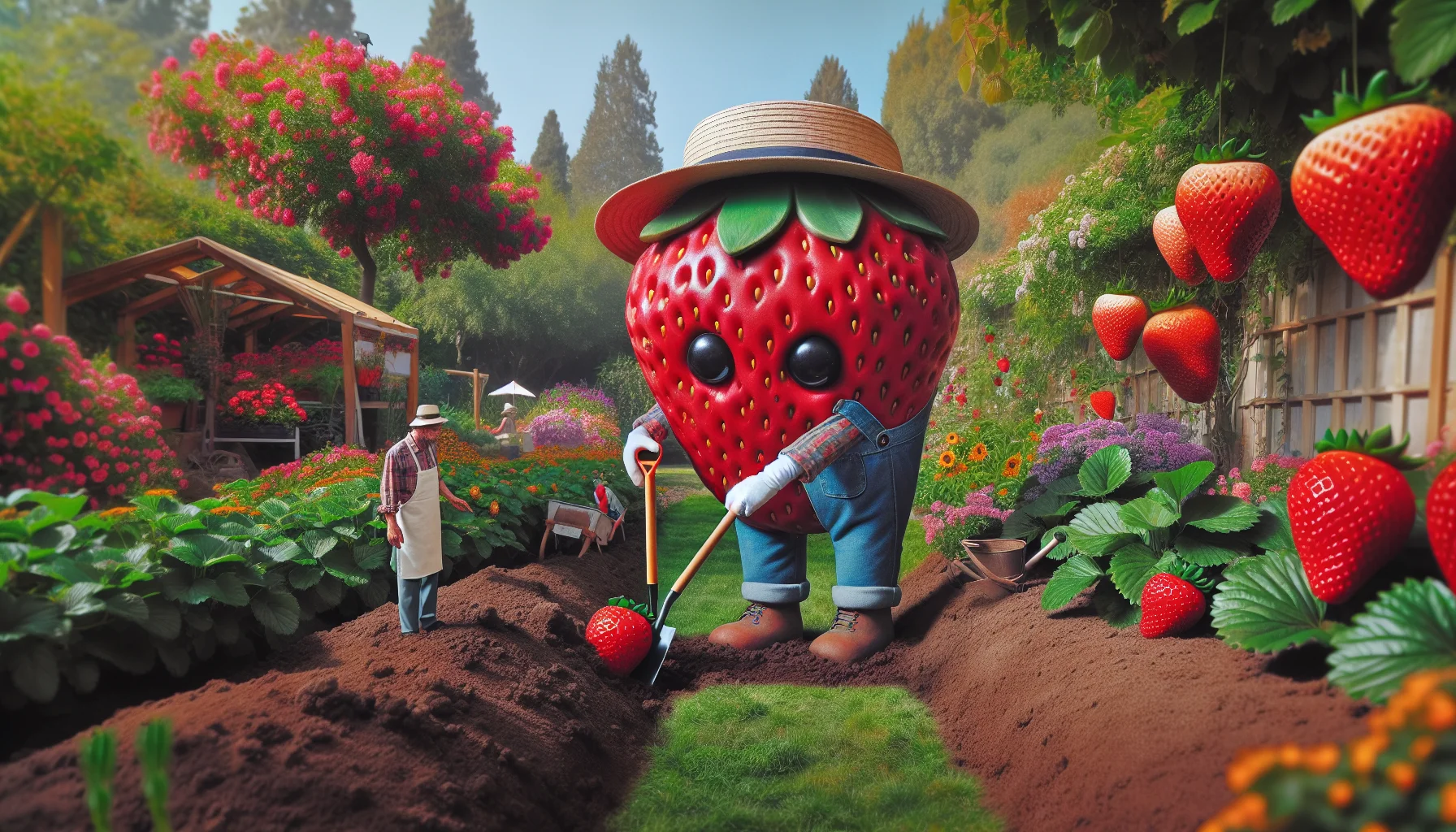Can you plant a strawberry Quiz
Test Your Knowledge
Question of
Can You Plant a Strawberry?
Planting strawberries is a delightful venture that captivates the interests of many gardeners around the world. Not only do these vibrant, sweet fruits offer a rewarding harvest, but they also bring beauty and fragrance to gardens. Whether you have a sprawling backyard or a modest balcony space, understanding the essentials of strawberry planting can enhance your gardening experience and yield delicious results.
Understanding Strawberry Plants
Strawberry plants are fascinating and widely loved for their sweet, red fruits. These perennial plants belong to the genus Fragaria and are known for their ability to produce fruits with a distinct, aromatic flavor. There are primarily three types of strawberry plants: June-bearing, everbearing, and day-neutral. June-bearing strawberries produce a large, single crop per year during early summer, everbearing varieties produce two to three harvests - in spring, summer, and fall, and day-neutral plants can produce fruit throughout the growing season as long as the temperatures are favorable. Strawberries grow best in full sunlight and well-drained soil, and they spread through runners, which are horizontal stems that grow outward from the main plant. Understanding these growth habits and types can help gardeners choose the right strawberries for their gardens and enjoy a bountiful harvest.
Choosing the Right Strawberry Variety
Selecting the appropriate strawberry variety is crucial for any gardener aiming to enjoy a bountiful and delicious harvest. The right variety will not only thrive in your specific climate but also align with your gardening goals, whether you're looking for large fruit, continuous harvests, or unique flavors. Understanding the differences between June-bearing, everbearing, and day-neutral strawberries is the first step in making an informed decision that will enhance your gardening experience and yield.
Step-by-Step Guide to Planting Strawberries
- Select a planting site that receives full sun for at least six to eight hours per day.
- Prepare the soil by ensuring it is well-drained and rich in organic matter. Aim for a pH between 5.5 and 6.8.
- Incorporate compost or aged manure into the soil to improve fertility and structure.
- Choose healthy strawberry plants or seeds. For quicker fruit production, opt for young plants.
- Space the plants 18 to 24 inches apart in rows that are 3 to 4 feet apart. This allows for proper air circulation and growth.
- Dig holes that are large enough to accommodate the roots without crowding them. Set the plants so that the crown is just above the soil surface.
- Backfill the holes gently and firm the soil around the plants to eliminate air pockets.
- Water the plants thoroughly after planting to settle the soil around the roots.
- Apply a layer of mulch around the plants to retain moisture, suppress weeds, and keep the fruit clean.
- Keep the soil consistently moist, but not waterlogged. Water the plants regularly, especially during dry periods.
Caring for Your Strawberry Plants
To ensure your strawberry plants thrive, it's essential to provide them with the right care. These plants love sunlight, so make sure they get at least 8 hours of direct sunlight each day. When it comes to watering, keeping the soil moist but not waterlogged is crucial. Aim to water them early in the morning to give the leaves time to dry out and prevent fungal diseases. Fertilization is also key to healthy growth. Use a balanced 10-10-10 fertilizer once a month during the growing season to provide your plants with the necessary nutrients. With proper sunlight, watering, and fertilization, your strawberry plants will produce sweet and juicy fruits for you to enjoy.
Common Challenges in Growing Strawberries
Growing strawberries can be a rewarding endeavor, but it comes with its own set of challenges. One of the most common issues gardeners face is dealing with various pests, including slugs, snails, and birds, which are attracted to the sweet fruit. Diseases such as powdery mildew and gray mold (botrytis) also pose significant threats to strawberry plants, often exacerbated by humid conditions or improper watering techniques. Furthermore, maintaining the right soil conditions and pH levels is crucial for strawberry health, requiring regular attention and adjustment.
Harvesting and Enjoying Your Strawberries
Harvesting strawberries at the right time is crucial for enjoying their full flavor. The best time to pick strawberries is in the morning when they are still cool. Look for berries that are fully red, without any white or green spots, as they won't ripen further once picked. Gently twist the berries off the stem rather than pulling them to avoid damaging the plant and the fruit. After harvesting, enjoy your strawberries fresh, incorporate them into desserts, or freeze them for later use. Fresh strawberries can be enjoyed on their own, with cream, or in salads, while frozen berries are perfect for smoothies or jams. Remember, the joy of growing your own strawberries doesn't just come from the delicious fruits but also from the process of caring for your plants and watching them grow.












